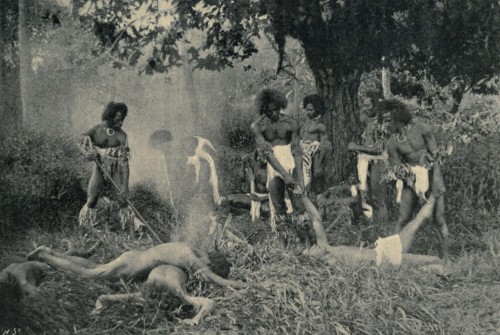
Throughout the 19th century, the Fijian people were known for the ritualistic cannibalism and Fiji was nicknamed the “Cannibal Isles” by the European sailors who refused to travel there. Ratu Udre Udre, a Fijian commoner is referred to as the “most profilic cannibal”, having reportedly ate as many as 872 people. It was said that he would keep a stone for each body he ate and when he died, those stones were placed along his tomb in northern Viti Levu. The chiefs of Rakiraki who would go to battle with Ratu Udre Undre would often give body parts, mainly heads, to Ratu Udre Udre, who believed that if he consumed 1000 people, he would become immortal. It was common practice for tribes to cannibalise their enemies.
“This morning we witnessed a shocking spectacle. Twenty (20) dead bodies of men, women and children were brought to Rewa as a present from Tanoa. They were distributed among the people to be cooked and eaten. They were dragged about in the water and on the beach. The children amused themselves by sporting with and mutilating the body of a little girl. A crowd of men and women maltreated the body of a grey-haired old man and that a young women. Human entrails were floating down the river in front of the mission premises. Mutilated limbs, heads, and trunks of the bodies of human beings have been floating about, and scenes of disgust and horror have been presented to our view in every direction. How true it is that the dark places of the earth are full of the habitations of cruelty.” - Rev. David Cargill, Methodist Missionary, Rewa, Fiji, 1839.




 "Drunk at the matinee" is a collection of candid poetry about stupid shit that we all experience from day to day.
"Drunk at the matinee" is a collection of candid poetry about stupid shit that we all experience from day to day.







No comments:
Post a Comment